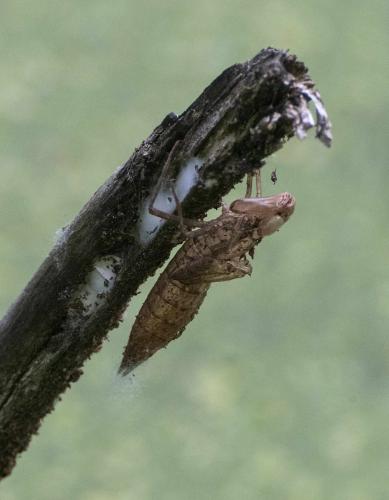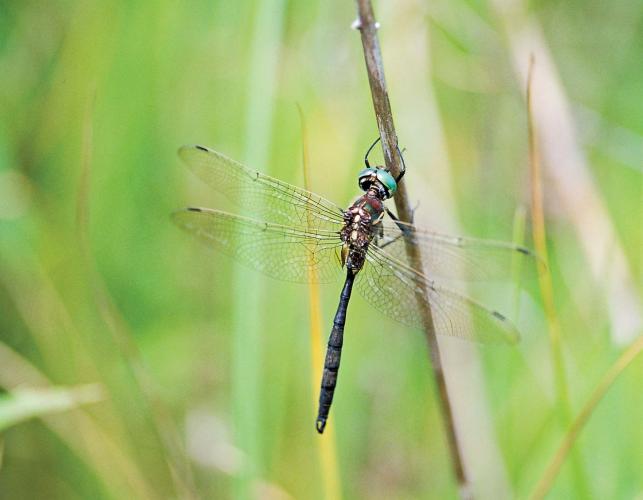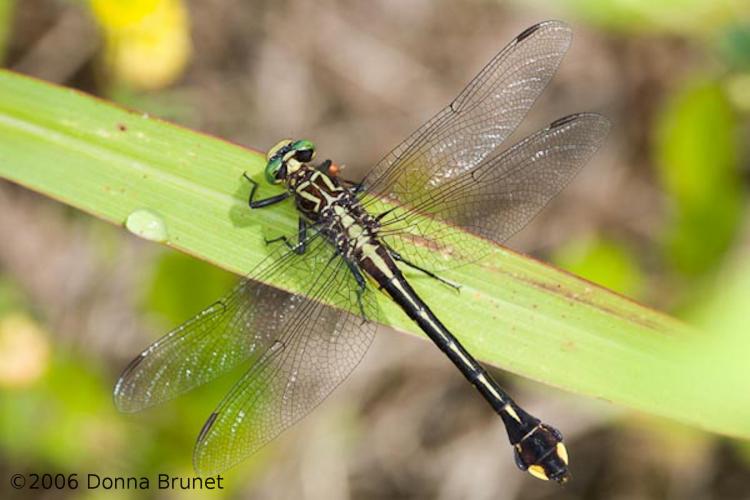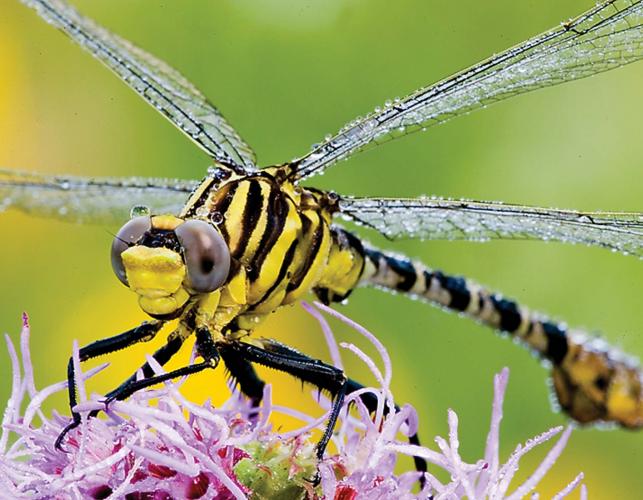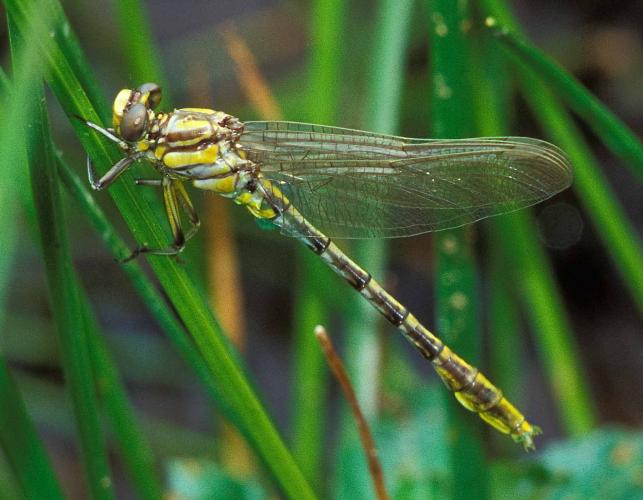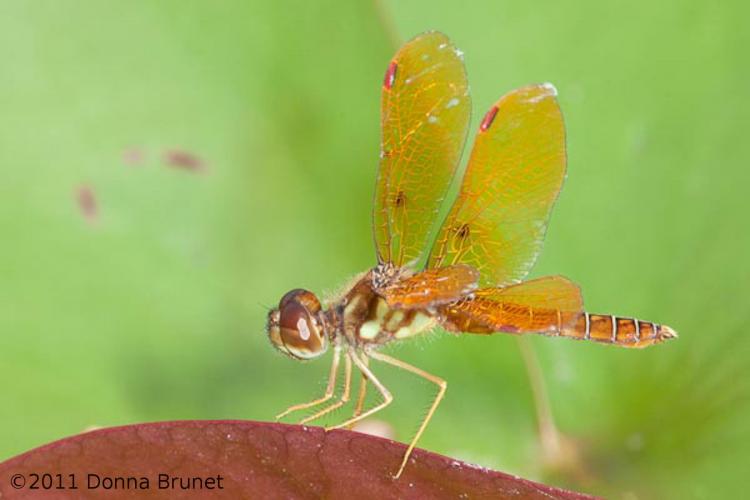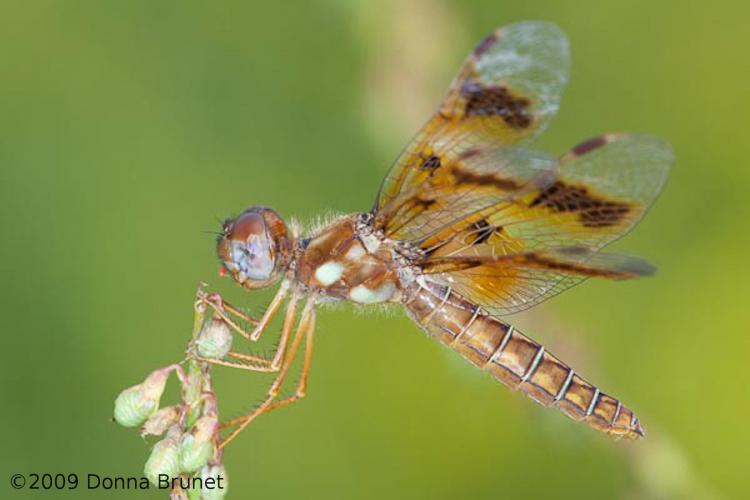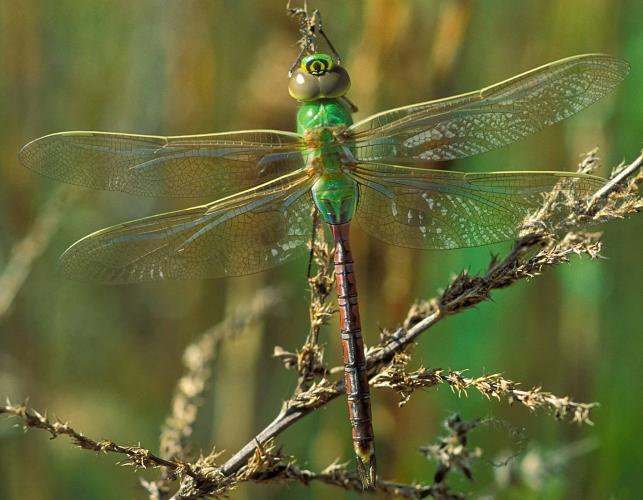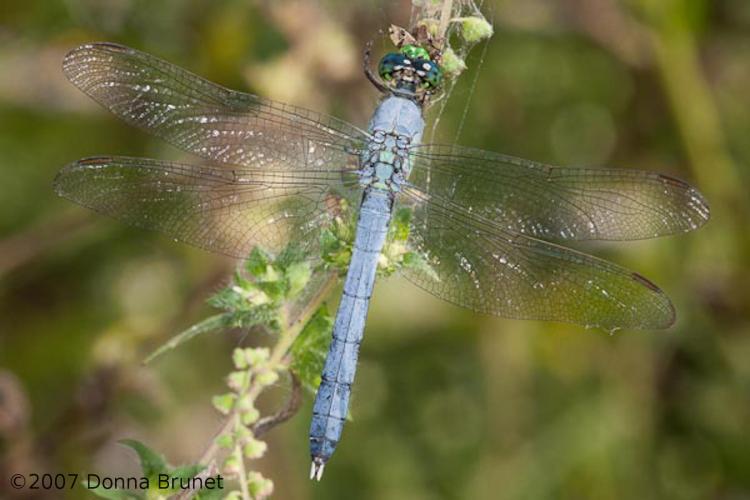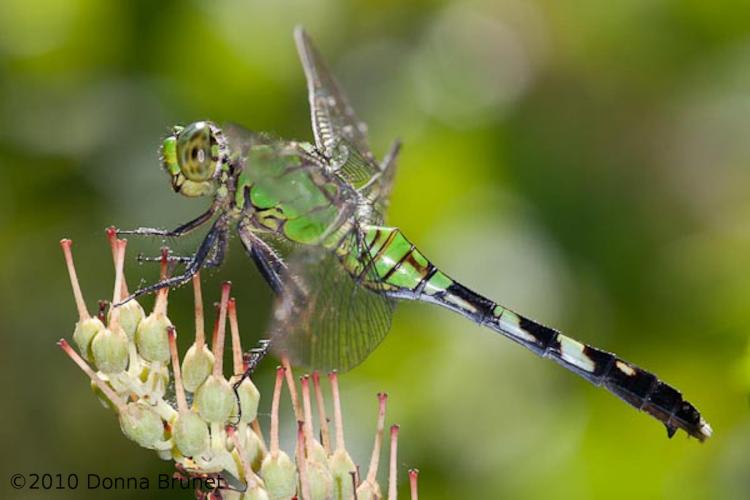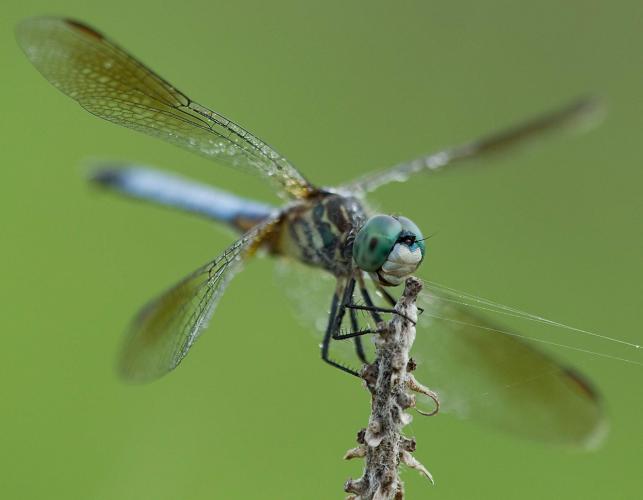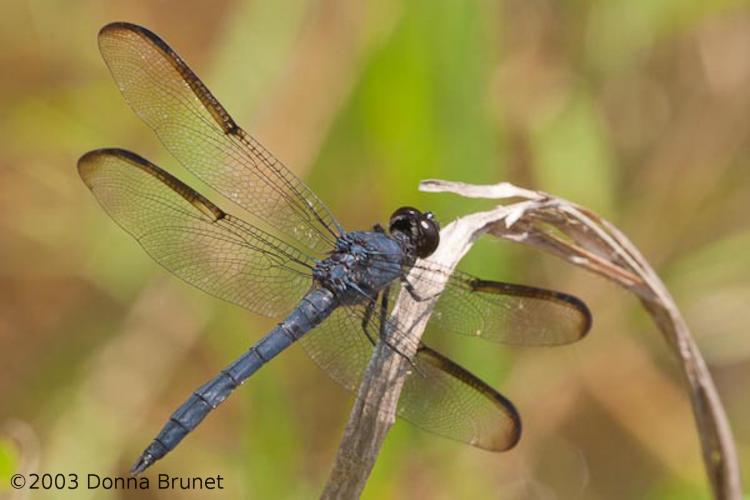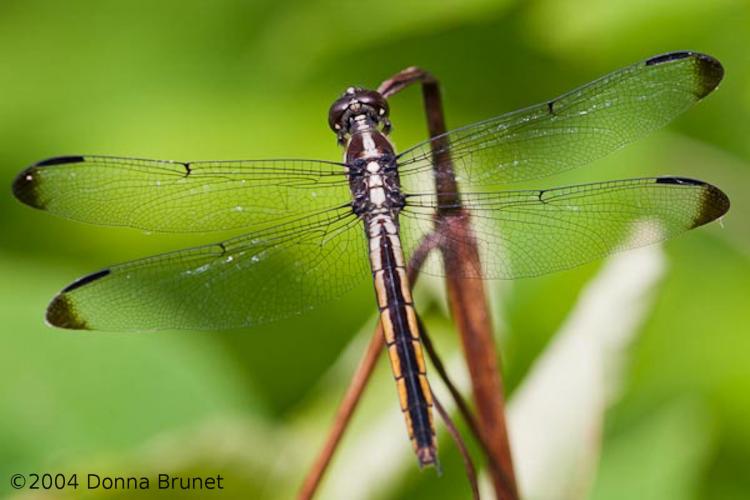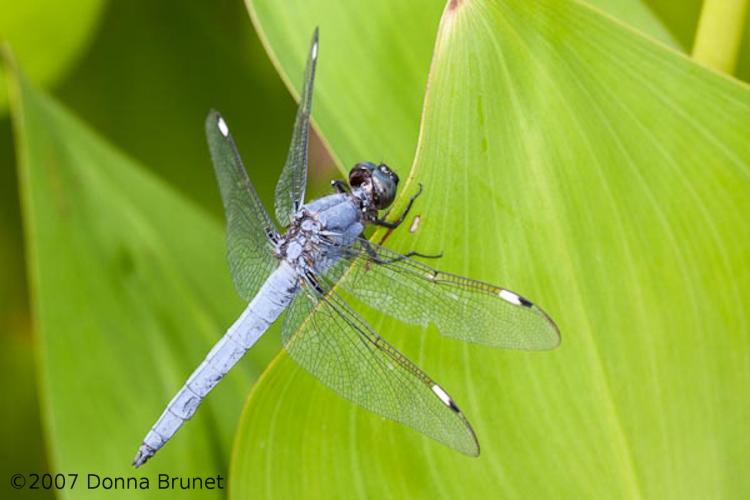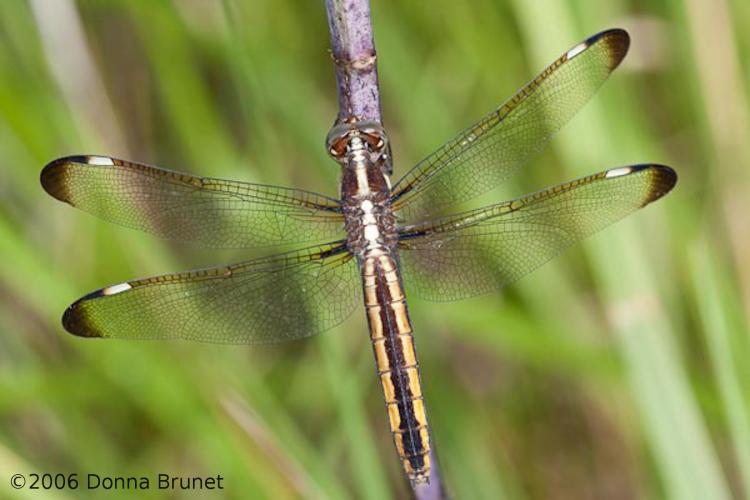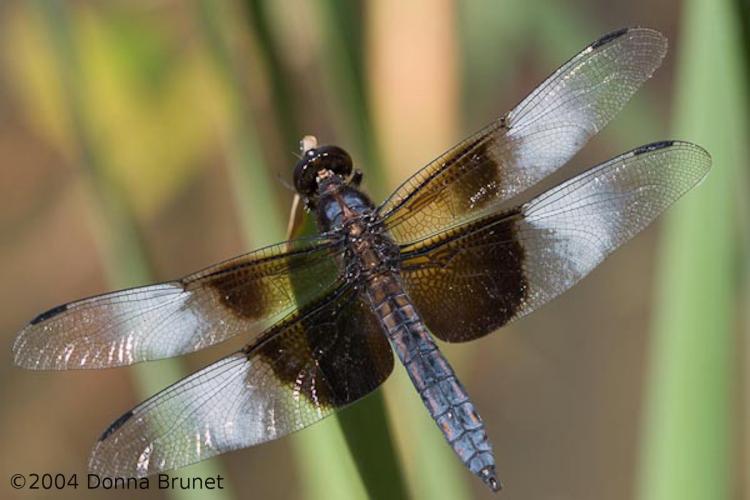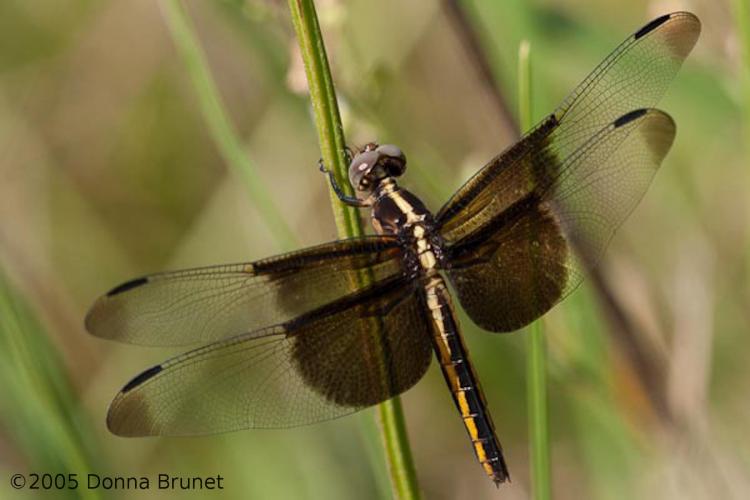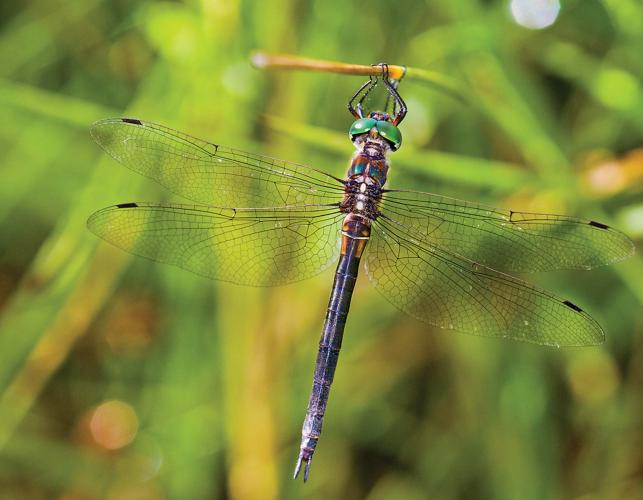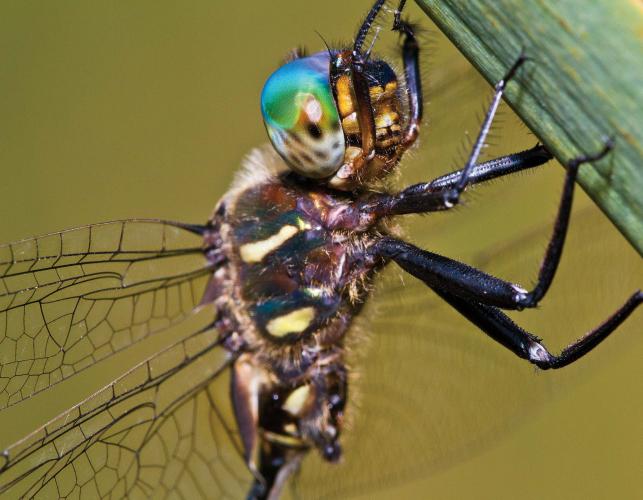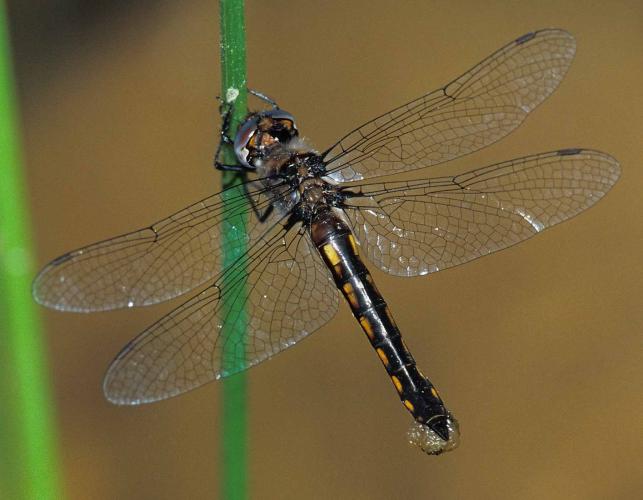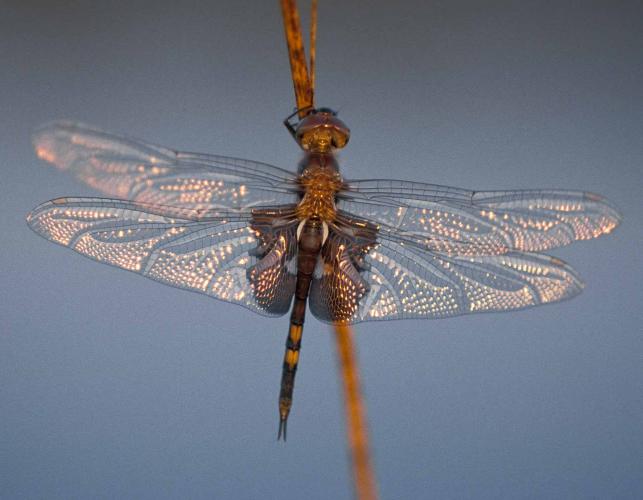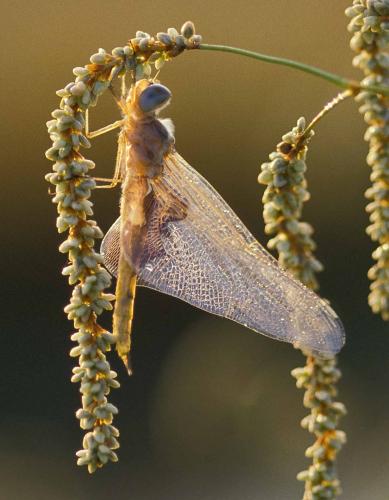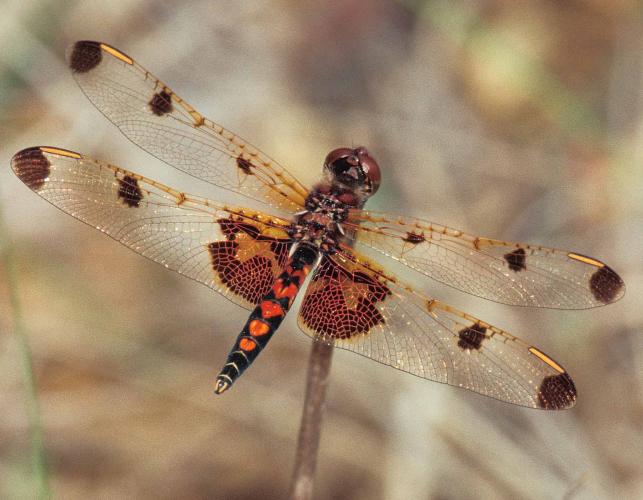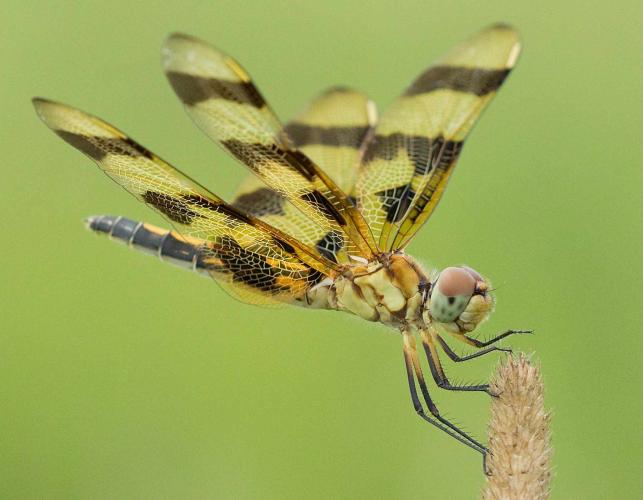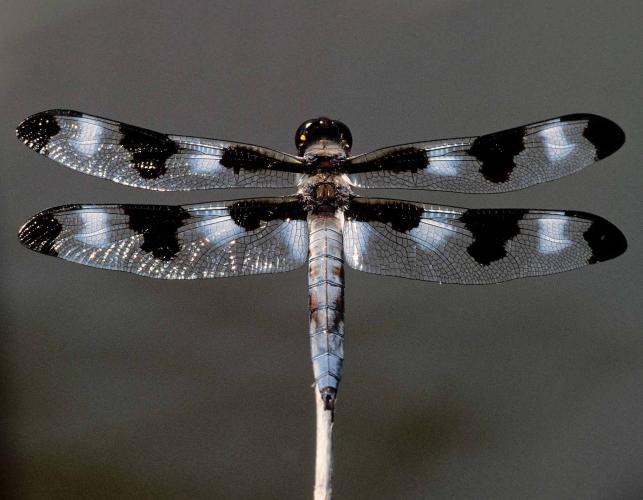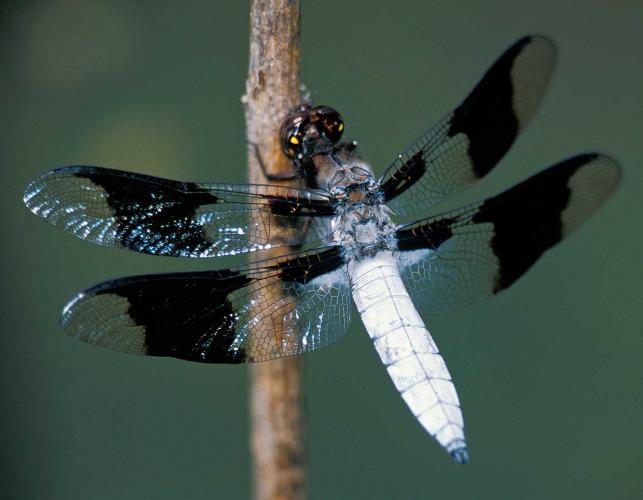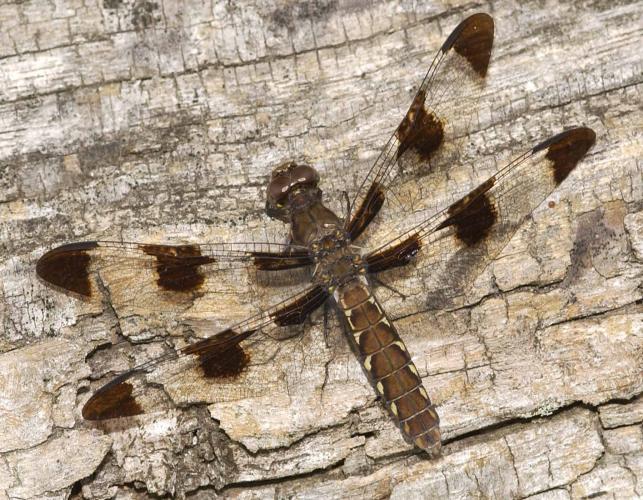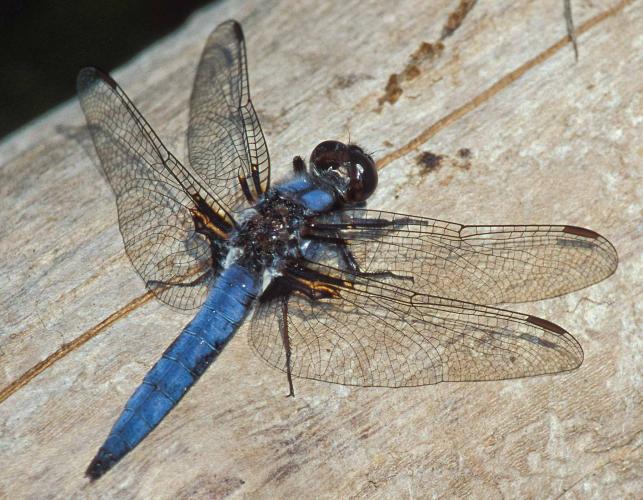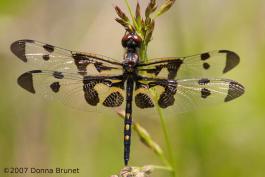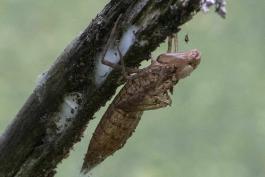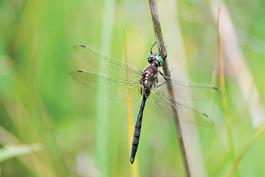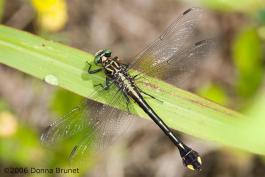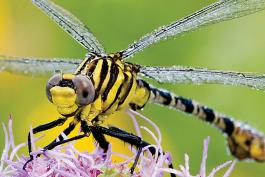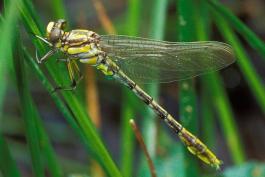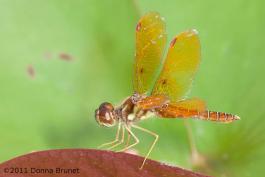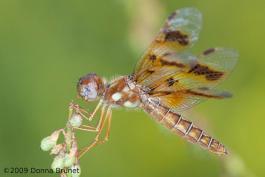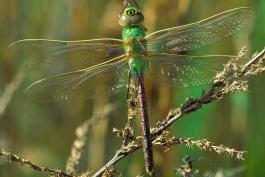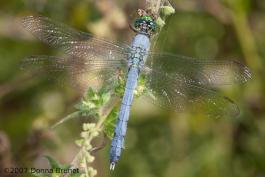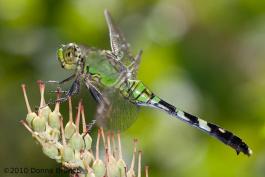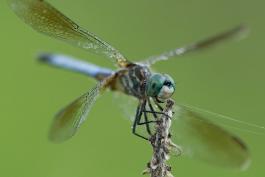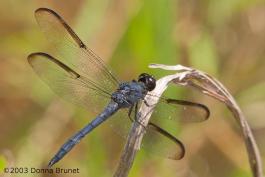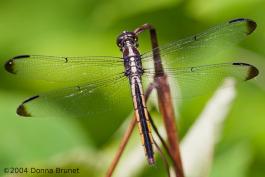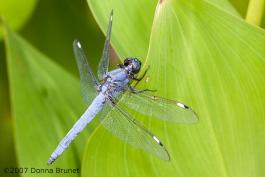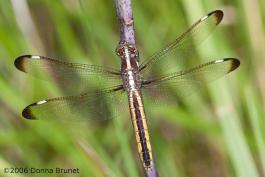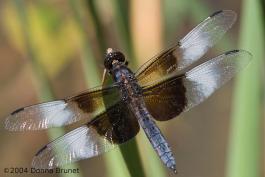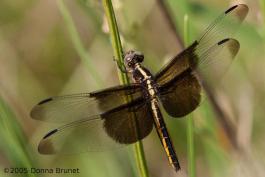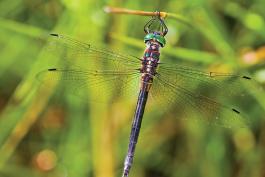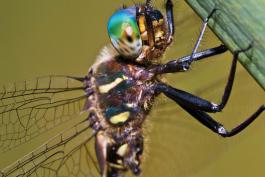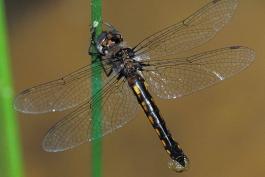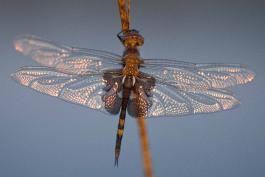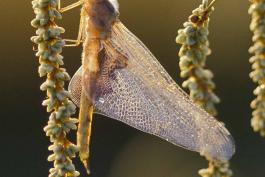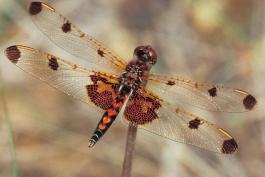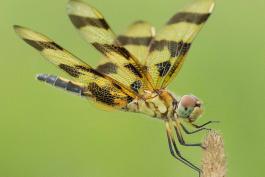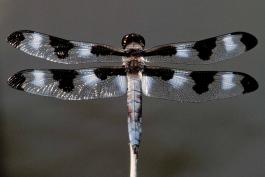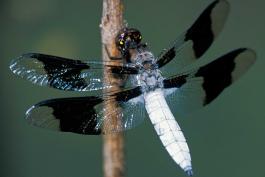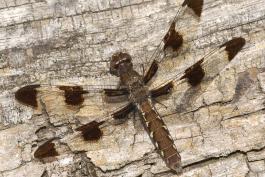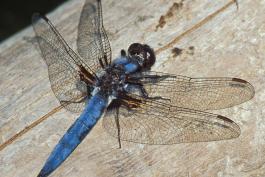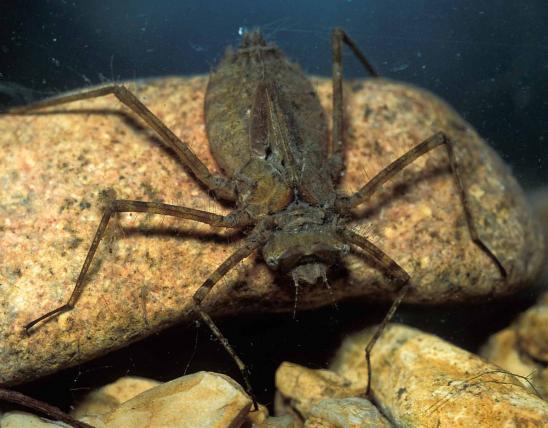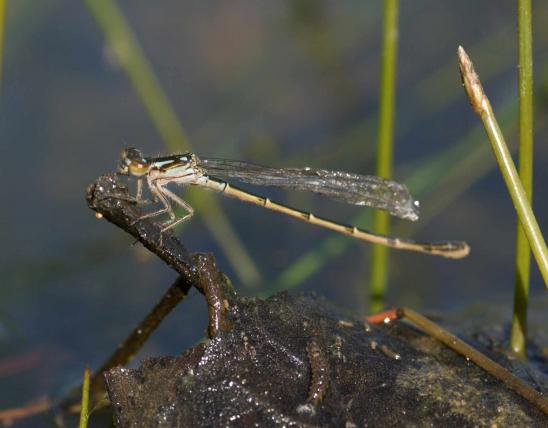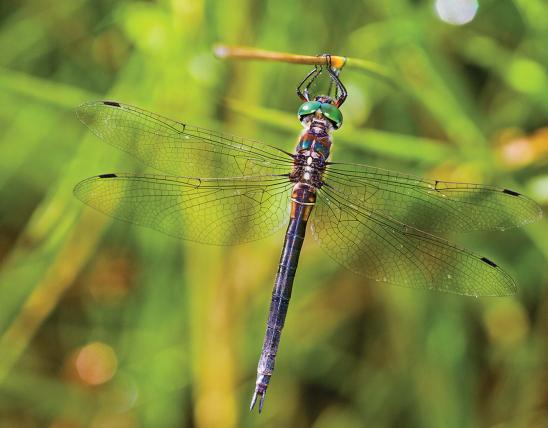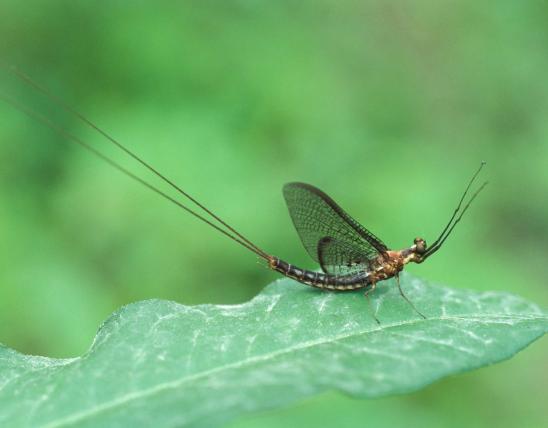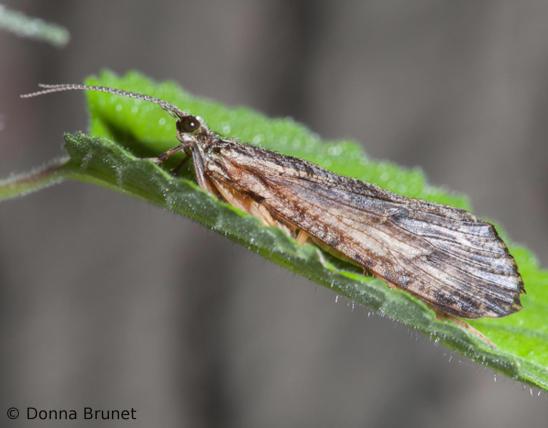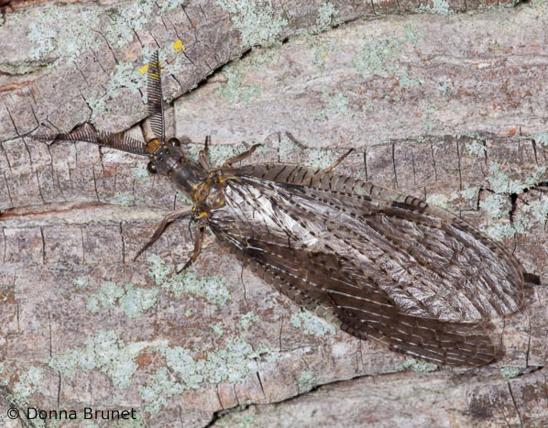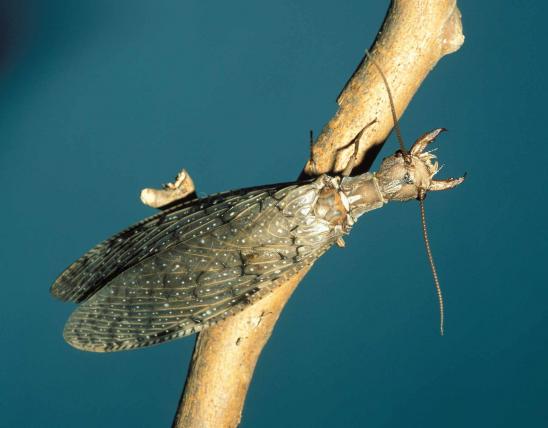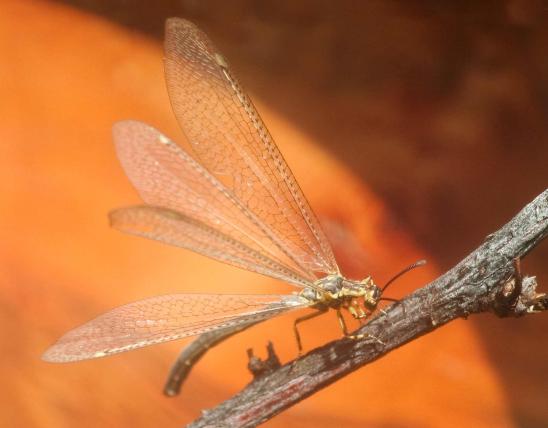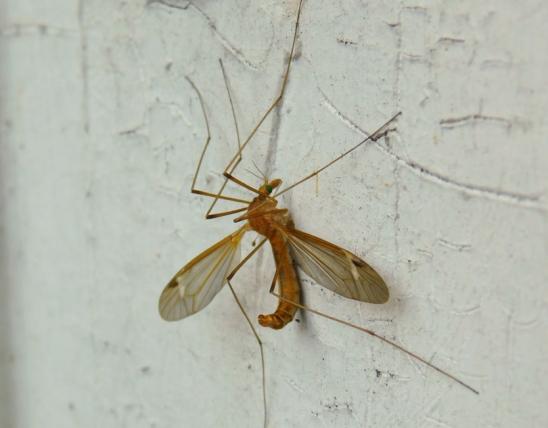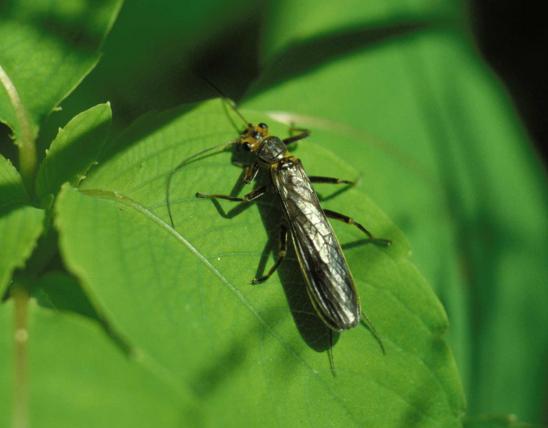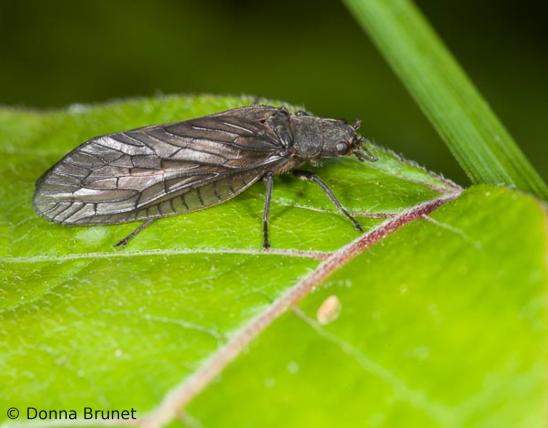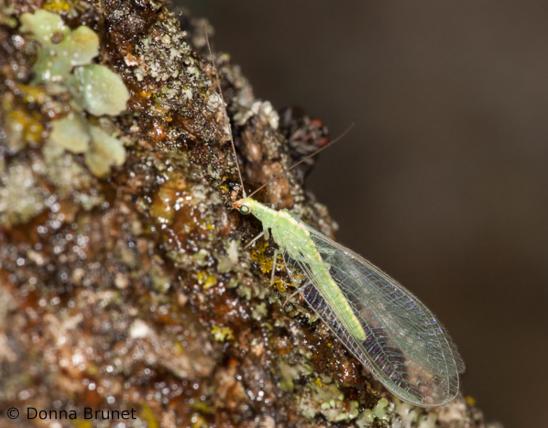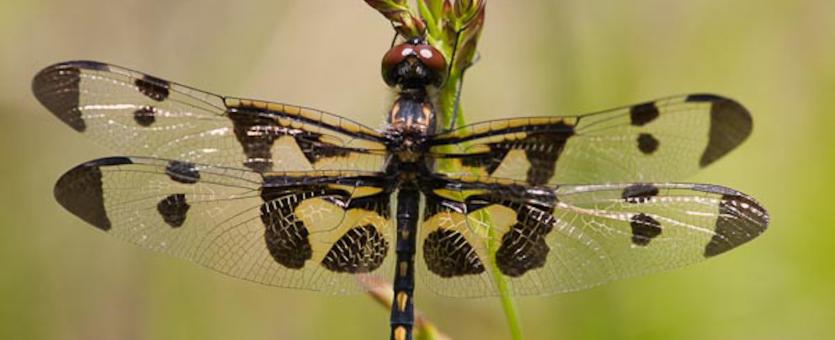
Dragonflies have slender, elongated abdomens, robust bodies, and 2 pairs of wings that are usually outstretched horizontally. The wings are membranous and elaborately veined. The hindwing is wider at the base than the forewing. The eyes are compound, large, adjoin each other, and nearly cover the head. The antennae are short. The six legs are poor for walking but good for perching.
Larvae (nymphs) are aquatic, usually drab, with 6 legs and with small wing buds. Gills are located inside the rectum (unlike those of damselflies, which extend from the hind end like 3 leaflike tails). They breathe by drawing water in and out of their hind end. By forcefully expelling this water, the animal can move quickly in a form of jet propulsion.
To distinguish between the many types of dragonflies, note the details of wing vein patterns as well as colors and markings on wings and body. Wing details, for example, can include coloration of the pterostigma, a narrow cell along the leading edge of the forewing, which is often black, white, and/or brown, and thickened. Males and females often have different colors and markings. Subadults often have different markings, too.
Key identifiers for adult dragonflies:
- Slender, elongated abdomen; robust body.
- Often colorful; often with conspicuous blotches or spots on wings.
- Two pairs of wings, usually outstretched horizontally.
- Wings membranous, elaborately veined.
- Hindwings are wider at their bases than the forewings.
- Eyes are compound, large, adjoin each other, nearly cover the head.
- Antennae short.
- Often found near water.
Adult length: from 1 to 3½ inches (varies with species).

Statewide.
Habitat and Conservation
Nymphs are common in many aquatic habitats.
Because they lay eggs in water, adults are usually near water, too, though their fast, strong flight takes them many places.
Food
Adult dragonflies hunt for flying insects in the air. Their hunting behavior is called “hawking.” Their legs are held in a basket shape during flight, which is perfect for grasping mosquitoes and other small flying insects. Often, dragonflies eat their prey on the wing, but sometimes they consume their meal while perched.
The hunting of the nymphs is more bizarre; they are typically lie-in-wait predators resting quietly on the substrate. When a potential meal swims or walks near, the nymph’s extendable jaws flash outward to snatch and draw in the food, which can be any small aquatic animal or even the claw of an equal-sized crayfish.
Status
There are many species of dragonflies in our state, ranging from very common to unusual to rare to in danger of disappearing. Nine Missouri dragonflies are species of conservation concern: bayou clubtail, midland clubtail, skillet clubtail, golden-winged skimmer, brimstone clubtail, elusive clubtail, Hine's emerald, Ozark emerald, and treetop emerald. Hine's emerald is endangered in Missouri and is the only dragonfly that is federally endangered.
Life Cycle
Males commonly perch on branches or other objects, patrolling their territories, driving away rival males, and attempting to mate with females. Mating pairs usually fly in tandem. The female usually flies low over the water, depositing eggs directly on the surface. Larvae (nymphs) undergo several molts as they grow. When ready, they crawl out of the water to a safe place, shed their skin, and emerge as a young adult. In the next days or week, they complete their maturation.
Human Connections
Anyone who dislikes mosquitoes can appreciate dragonflies! Dragonflies are also admired for their beautiful forms. Indeed, dragonfly-watching is a "thing," and people use binoculars and cameras to see and record the various species. Dragonflies are fun to watch as they feed, perch, defend territories, fly in groups, migrate, patrol around ponds, mate, lay eggs, and perform other behaviors.
In case you are wondering, dragonflies cannot sting. The larger species can deliver a pinching bite when handled, but they cannot harm people.
In old-time Ozark dialect, large dragonflies, especially green darners, were called "katynippers" and "snake feeders."
Ecosystem Connections
Most of a dragonfly’s life is spent as a nymph. Some species live for 5 years underwater before becoming adults.
Dragonfly nymphs and the adult forms are important predators of mosquitoes, midges, and other small insects.
The nymphs are important food for fish, frogs, and other aquatic insectivores. Spiders and birds prey on adult dragonflies.
On very hot, sunny days, adult dragonflies and damselflies often rest in an "obelisk posture," which looks something like a handstand, with the abdomen tip upraised to point at the sun. This minimizes solar exposure and helps regulate the insect's body temperature.

